Disclosure: This article contains affiliate links. We may earn a commission from purchases at no extra cost to you, which helps our travel content.
Standing atop Byrsa Hill with the Mediterranean breeze tousling my hair, I couldn't help but feel like I'd stepped into a geological time machine. The ancient ruins of Carthage spread before me – a civilization that rivaled Rome now reduced to stunning archaeological remnants on Tunisia's coast. As someone who typically chases active volcanoes and snowcapped peaks, this historical adventure offered a different kind of thrill: peeling back layers of human history written in stone. Grab your sun hat and join me as I break down exactly how to explore this UNESCO World Heritage site solo!
Why Carthage Deserves Your Attention
Let me confess something: I initially came to Tunisia chasing the desert landscapes, but Carthage completely blindsided me with its magnificence. Founded by Phoenicians in the 9th century BCE, this powerhouse civilization controlled Mediterranean trade routes before engaging in epic showdowns with Rome (spoiler alert: it didn't end well for Carthage).
What makes this place special isn't just its dramatic history – it's how the ruins interact with the landscape. The city sits on a promontory extending into the Mediterranean, creating a natural harbor that helped Carthage become a maritime superpower. The geological positioning is no accident; these ancient engineers understood terrain advantage millennia before modern city planning.
Unlike many ancient sites that feel cordoned off, Carthage is wonderfully accessible. The ruins are scattered throughout a modern suburb of Tunis, creating this surreal juxtaposition where everyday Tunisian life unfolds alongside 2,000-year-old columns. You'll literally walk from a modern café straight into the ancient past.
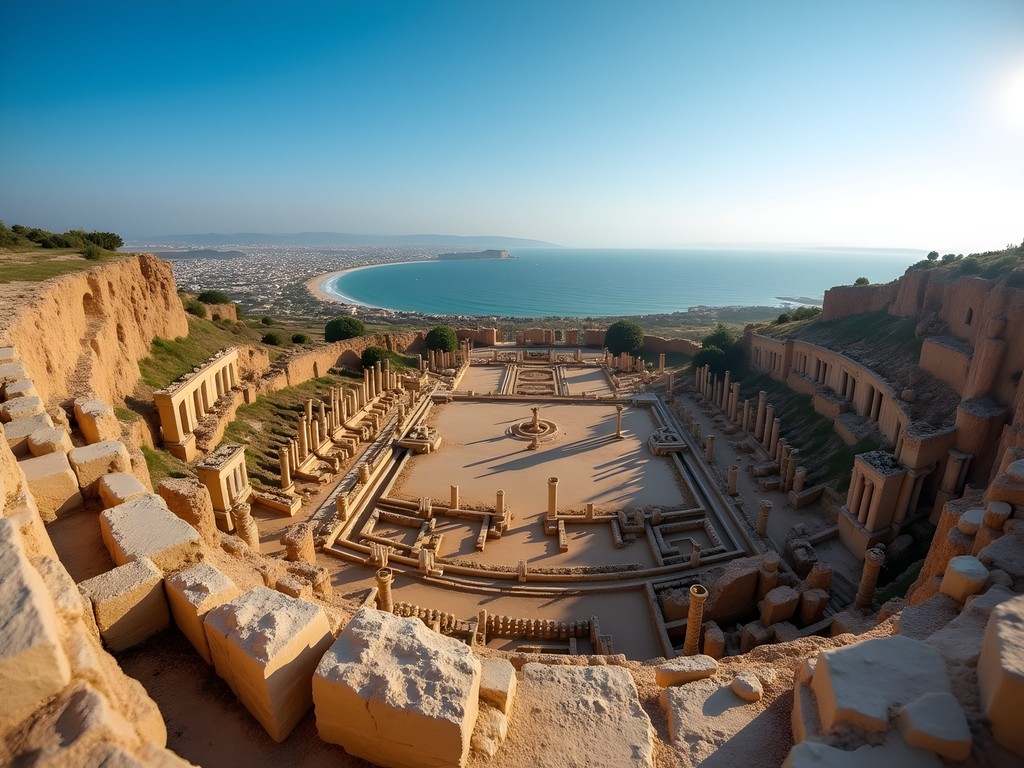
💡 Pro Tips
- Purchase the multi-site ticket (about 10 TND) that covers all major archaeological sites
- Download the Carthage+ app for self-guided tours with augmented reality features
- Visit Byrsa Hill first for orientation and context before exploring individual sites
Solo Female Safety in Carthage
Coming from Australia where I'm used to fairly straightforward travel experiences, I'll admit I had some initial hesitation about exploring Tunisia solo. Let me share the unfiltered reality: Carthage is located in an upscale suburb of Tunis and is one of the safest areas for tourists in the country.
During my week exploring the ruins, I experienced nothing but hospitality from locals. The archaeological sites are well-maintained, staffed with security, and frequented by international tourists and local families alike. That said, I still maintained my standard travel vigilance.
Staying hydrated is absolutely critical here – the Mediterranean sun is no joke, especially when you're scrambling around ancient stones for hours. I relied heavily on my trusty insulated water bottle which kept my water cold even after baking in the Tunisian sun for hours. The wide mouth made it easy to refill and add ice from my accommodation each morning.
For sun protection, I never left my room without slathering on mineral sunscreen – it's reef-safe (important for those Mediterranean swims) and didn't run into my eyes when I inevitably started sweating while sketching the Antonine Baths.
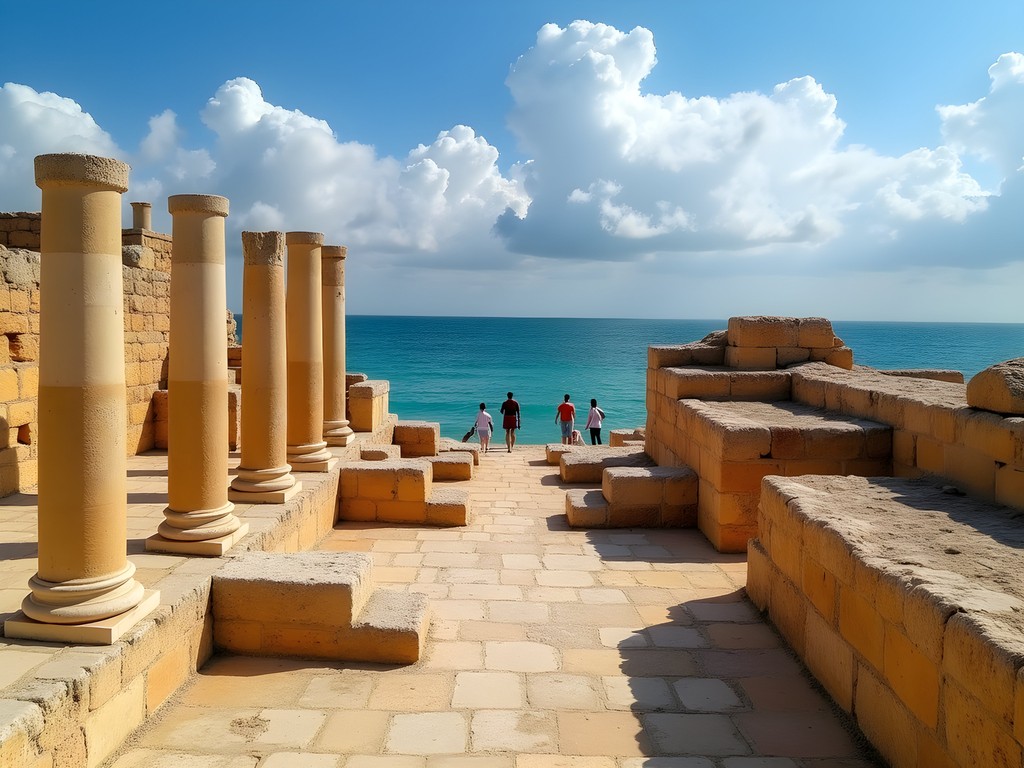
💡 Pro Tips
- Dress modestly (shoulders and knees covered) to respect local culture and avoid unwanted attention
- Take official taxis (yellow with black stripes) between sites if you're tired – they're affordable and safer than walking along busy roads
- Keep valuable items in a cross-body bag positioned in front of you, especially in crowded areas
Geological Wonders Hidden in Plain Sight
As someone obsessed with how landscapes shape civilizations, Carthage is a geological storytelling masterclass. The city's famous ports – both military and commercial – were engineering marvels that utilized the natural bay formation. Today, you can still see the circular military harbor, though it's a shadow of its former glory.
One of my favorite discoveries was seeing how the ancient builders incorporated local limestone and sandstone into their structures. The Romans later repurposed many Carthaginian building materials after destroying the original city – a geological recycling program, if you will! You can literally see the layers of history in the stone.
I spent one entire afternoon sketching cross-sections of the Punic Ports, trying to capture how the ancient engineers modified the natural harbor. Having reliable drawing supplies is essential when documenting these sites. My waterproof sketchbook was perfect for this – the pages didn't buckle when I added watercolor washes to my geological diagrams, and it survived an unexpected rain shower that sent other tourists running for cover.
For precise measurements (yes, I'm that geology nerd who measures ancient columns), my laser distance meter was invaluable. It's compact enough to fit in my pocket but accurate enough to help me create scaled drawings of the architectural elements.
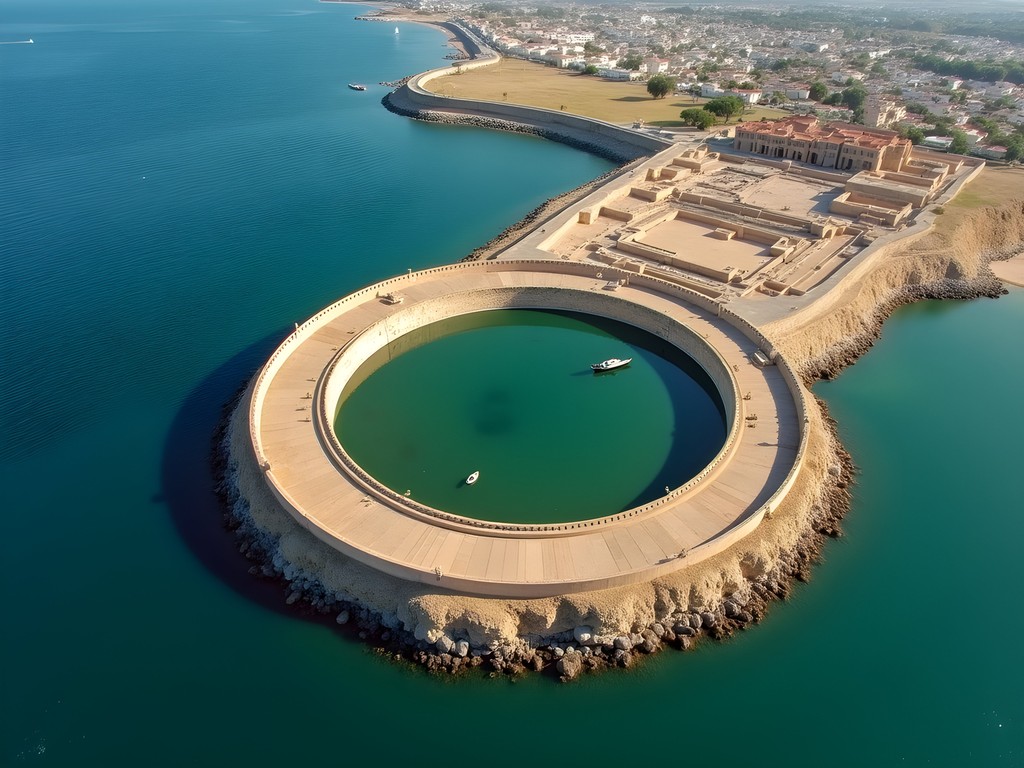
💡 Pro Tips
- Visit the Carthage Museum on Byrsa Hill to see geological samples and building materials from different historical periods
- Look for the different stone types used throughout the sites – the colors and textures tell the story of local quarries
- The Punic Ports complex offers the best example of how Carthaginians adapted natural geography for maritime advantage
A Week's Itinerary: Beyond Just Ruins
While Carthage's archaeological sites could easily fill 2-3 days of exploration, I recommend using it as a base for a full week to experience the surrounding areas as well. Here's how I structured my time:
Days 1-2: Core Carthage Sites
Focus on the main archaeological complex including the Antonine Baths, Roman Villas, Punic Ports, and Byrsa Hill. The sites close relatively early (usually around 5:30 PM), so start your days early.
Day 3: Sidi Bou Said
Just a short train ride from Carthage is this stunning blue-and-white village that looks like it was transplanted from Greece. I spent hours wandering the cobblestone streets and sketching the distinctive architecture.
Day 4: Tunis Medina & Bardo Museum
The bustling medina of Tunis offers a complete contrast to Carthage's quiet ruins, while the Bardo Museum houses incredible mosaics salvaged from various archaeological sites.
Day 5: Dougga Day Trip
This well-preserved Roman city about 2 hours from Tunis was actually my favorite archaeological site in Tunisia – worth the journey!
Days 6-7: Beach Recovery & Final Explorations
The beaches near Carthage are perfect for relaxation after days of intensive sightseeing.
Navigating between these sites was surprisingly easy using public transport. I tracked all my journeys using my offline GPS navigator which helped me plot coordinates of interesting geological features and never get lost between sites.
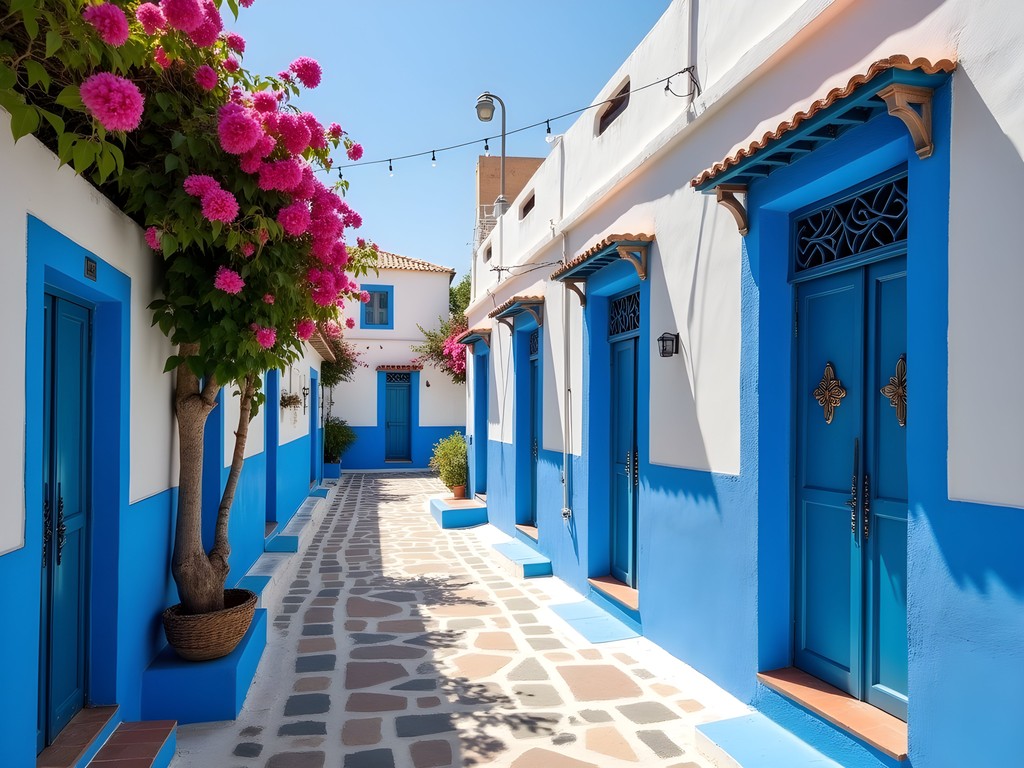
💡 Pro Tips
- Purchase a week-long 'Carte Bleue' transit card for unlimited rides on the light rail system connecting Carthage, Sidi Bou Said, and Tunis
- Many sites close for a lunch break from 12:30-2:30 PM – use this time to eat or rest during the hottest part of the day
- Bring a lightweight packable daypack to carry water, snacks, and sun protection as facilities at archaeological sites are limited
Local Connections: Beyond the Guidebook
The highlight of my time in Carthage wasn't actually found among the ancient stones, but in the connections I made with locals passionate about their heritage. Through a stroke of luck (and some awkward hand gestures when my French failed me), I met Malik, a local archaeology student who offered to show me some lesser-known aspects of the sites.
Malik introduced me to a tiny workshop where artisans create mosaics using traditional techniques passed down through generations. I spent a fascinating afternoon learning to cut and place tesserae (the small colored stones used in mosaics). This experience gave me a deeper appreciation for the intricate ancient mosaics I'd been admiring throughout the archaeological sites.
Communication was occasionally challenging as my French is embarrassingly basic and my Arabic non-existent. My pocket translator device became my constant companion, allowing for more meaningful conversations with locals than I could have managed alone. It works offline and handles Tunisian Arabic dialect surprisingly well.
For evening meals, I often found myself at small family-run restaurants in the nearby residential areas rather than tourist spots. The owner of my guesthouse recommended places where I could try authentic Tunisian dishes like brik (a crispy pastry with egg) and ojja (a spicy tomato and egg dish) – both became instant favorites!

💡 Pro Tips
- Learn basic French phrases as they're more widely understood than English in many situations
- Ask your accommodation host for restaurant recommendations where locals eat – prices are better and food more authentic
- Visit the Carthage site offices early in your trip and ask if any special events or less-visited areas are open during your stay
Final Thoughts
As I sketched one final diagram of Carthage's harbor formations on my last evening, watching the Mediterranean sunset paint the ancient stones in gold, I reflected on how this journey had surprised me. I came to Tunisia chasing geological wonders but found myself equally captivated by human history etched in stone.
Carthage offers solo travelers a rare combination of accessible history, beautiful landscapes, and genuine cultural connections – all within a setting that feels both safe and authentically challenging. The layers of civilization here – Phoenician, Roman, Byzantine, Arab – mirror the geological strata I typically study, each telling a story of adaptation and resilience.
Whether you're sketching ancient harbors, learning traditional mosaic techniques, or simply wandering among ruins that have witnessed over 2,800 years of human drama, Carthage rewards the curious traveler. And isn't that curiosity – that desire to understand both the earth beneath our feet and the civilizations that rose from it – what drives us to explore in the first place? Pack your sunscreen, bring plenty of water, and prepare to be humbled by the ingenious ways humans have shaped this Mediterranean landscape for millennia.
✨ Key Takeaways
- Carthage is generally safe for solo female travelers, especially if staying in the main tourist areas
- The multi-site ticket provides excellent value for accessing all major archaeological sites
- Spring offers ideal weather conditions with fewer crowds than the summer high season
- Learning basic French phrases significantly enhances the experience and interactions with locals
- Allow at least 3 days for Carthage itself, plus additional time for nearby attractions like Sidi Bou Said
📋 Practical Information
Best Time to Visit
March to May (spring) or September to November (fall)
Budget Estimate
$40-60 USD per day including modest accommodation, food, and site entrance fees
Recommended Duration
3-7 days (3 days for Carthage sites, additional days for surrounding areas)
Difficulty Level
Moderate (Requires Walking On Uneven Surfaces, Limited Shade, Basic Tourist Infrastructure)

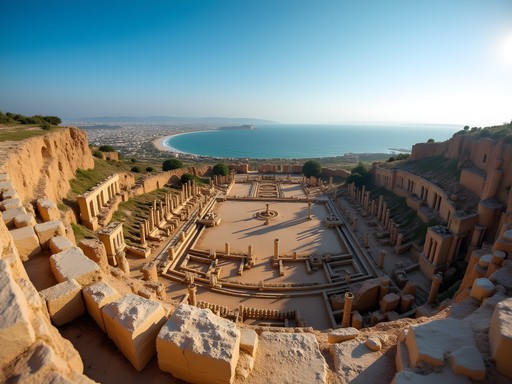







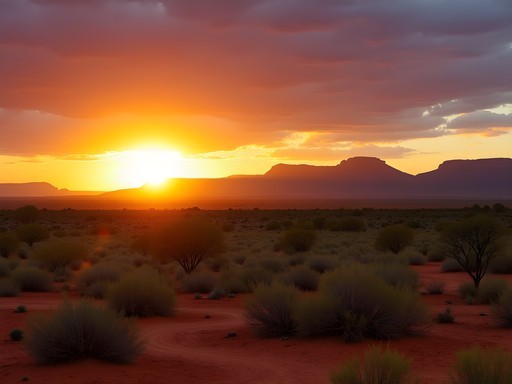


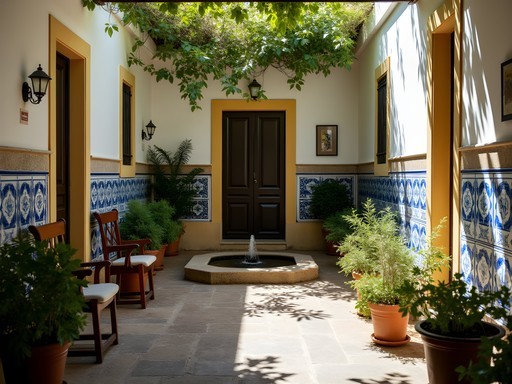
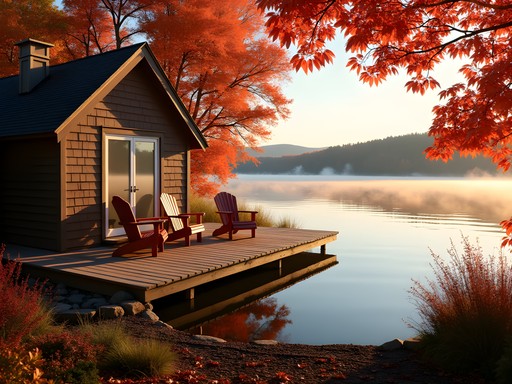


Comments
Bryce Diaz
Rachel, this is exactly the kind of geological perspective that's missing from most Carthage guides! I was there about two years ago and completely missed the connection between the harbor design and the natural formations. Your week-long itinerary is spot on - especially the tip about visiting Byrsa Hill first for orientation. One thing I'd add for solo travelers: the small museum near the Antonine Baths often gets overlooked but has incredible artifacts and almost no crowds. I spent nearly three hours there sketching and taking notes. For those planning to visit multiple sites, I found the heritage pass to be worth every dinar - it covers all the major archaeological sites and lets you skip the ticket lines.
bluemood
That small museum was a highlight for me too! So underrated.
Rachel Snyder
Thanks Bryce! The geological aspects really fascinated me. And yes, that museum is a hidden gem - I actually mentioned it briefly in the itinerary section but should have emphasized it more. The curator there was incredibly knowledgeable!
redfan
Those geological diagrams you mentioned sound fascinating! Any chance you'll share them?
Rachel Snyder
I actually included a few in the photo gallery at the bottom of the post! Scroll down to see them - I'm no professional artist but I tried to capture the unique formations.
redfan
Found them! Super cool. Thanks!
bluemood
Rachel, your post brought back so many memories! I visited Carthage last year and was equally mesmerized by those harbor formations. Did you get a chance to visit the Antonine Baths at sunset? That was my favorite spot - the light hitting those ancient stones created the most incredible photo opportunities. I also found the locals incredibly welcoming as a solo traveler. The public transportation worked great for getting around, though I did splurge on a guide for one day to really understand the historical context.
Rachel Snyder
Yes! The Antonine Baths at sunset were magical. I actually went back twice because the first evening was so spectacular. So glad you had a positive experience with the locals too.
bluemood
Did you try any of the local seafood restaurants near the harbor? There was this tiny place with blue chairs that served the most amazing grilled fish!
starnomad
That sunset photo from Byrsa Hill is STUNNING! I'm adding Carthage to my 2026 travel list just based on that view. Love how you connected the geological history with the ruins - never thought about ancient sites that way before. Did you find the locals spoke much English or did you use French?
winterchamp
Not Rachel but I was just there - French is definitely more useful than English, especially with older locals. The younger generation speaks some English though!
coolzone
Going to Tunisia in November! Is Carthage doable as a day trip from Tunis?
Savannah Walker
Absolutely! It's only about 15-20 minutes by train from Tunis. Super easy day trip. Just get the TGM line from Tunis Marine station.
coolzone
Perfect, thanks! Can't wait to see those harbor formations Rachel mentioned.
Savannah Walker
Rachel, your description of standing on Byrsa Hill took me right back to my visit last year! I had the same feeling of time-traveling. As another solo female traveler, I appreciated your honest safety assessment - I felt the same way about Carthage being much more relaxed than Tunis. One tip I'd add: the multi-site ticket is absolutely worth it, but bring a pen to mark which sites you've visited since the ticket checkers don't always mark them. I sketched the harbor formations too! Used my watercolor journal which was perfect for capturing those Mediterranean blues. Your week-long itinerary is spot on - I'd just add a sunset visit to Sidi Bou Said while you're in the area!
coolzone
Sidi Bou Said at sunset is magical! Those blue and white buildings against the orange sky 😍
winterchamp
Just got back from Carthage last month and this guide would've been SO helpful! The geological insights are something I completely missed - wish I'd known to look for those harbor formations. The public transportation tip saved me though - those yellow taxis from Tunis are definitely overpriced. Did anyone else find the Antonine Baths crowded? I went early morning and had them almost to myself!
starnomad
Early morning is definitely the move! I went around 4pm and it was packed with tour groups. The light wasn't great for photos either.
winterchamp
Yeah, the morning light on those ruins is something else. Worth the early wake-up call!
tripqueen
Great post! For anyone planning a trip, don't miss the Carthage Food Festival if you're there in September. Amazing local cuisine and they set up tables right near some of the ruins. Also, the little-known viewing point Rachel mentioned near the Antonine Baths is truly magical at sunrise - I had it completely to myself while tour groups were still having breakfast. Just bring water as nothing is open that early!
hikinglife
Wow those sunset photos from Byrsa Hill are incredible! Adding this to my travel list immediately!
smartzone
Your week-long itinerary is GOLD! Most people (including me when I visited) try to cram Carthage into a day trip from Tunis. Big mistake! I missed so many of these geological features you highlighted. Definitely taking my Carthage: A History and heading back for a proper exploration. Those harbor sketches you did are amazing too - do you sell prints?
Rachel Snyder
Thanks for the kind words! I'm actually working on making some prints available through my website - should be ready next month. I'll post an update when they're available!
Venture X
Premium card with 2X miles, $300 travel credit, Priority Pass